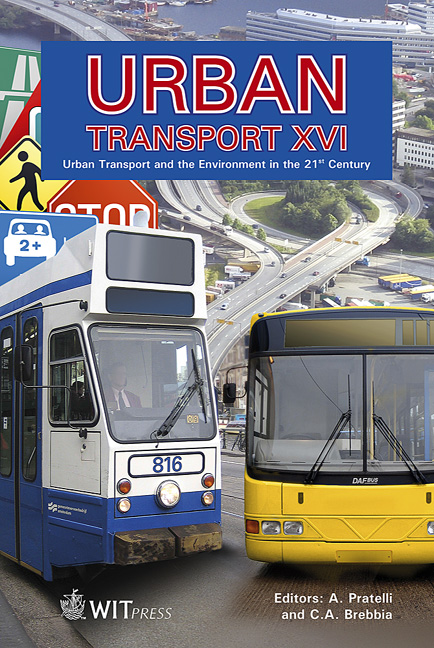Roundabout Perception: Review Of Standards And Guidelines For Advanced Warning
Price
Free (open access)
Transaction
Volume
111
Pages
12
Page Range
71 - 82
Published
2010
Size
1213 kb
Paper DOI
10.2495/UT100071
Copyright
WIT Press
Author(s)
A. Pratelli, R. R. Souleyrette & C. Harding
Abstract
This paper deals with roundabout visibility and perception design requirements, including available standards and guidelines in the US and Europe for warning signs. To provide for the highest levels of safety, visual perception of junctions is important even where advance warning signs are provided, to reinforce driver knowledge and confidence in their actions. For roundabouts, three different types of central island development are recently suggested to affect their visual perception, and the related classification defines the reduced, the compressed and the streamlined, or slender, central island development. The paper proposes new methodologies to test this perceptibility of various roundabout designs and developments. Two research strategies based on the specific roundabout visual intrusion defined by the solid angle are outlined: on-site stand-by/2D and virtual video/3D. Finally, some preliminary results are discussed in view of selecting original and proper standards. Moreover, future research is suggested for extending the methodology to more comprehensive application. Keywords: roundabout design and safety, roundabout perceptibility, driver visual perception, solid angle, visual intrusion, central island development. 1 Introduction The design of a roundabout, like that of any other road component, should be mainly based on principles of safety and capacity. But, in addition to using geometric standards, performance formulas and capacity models, many aspects
Keywords
roundabout design and safety, roundabout perceptibility, drivervisual perception, solid angle, visual intrusion, central island development





